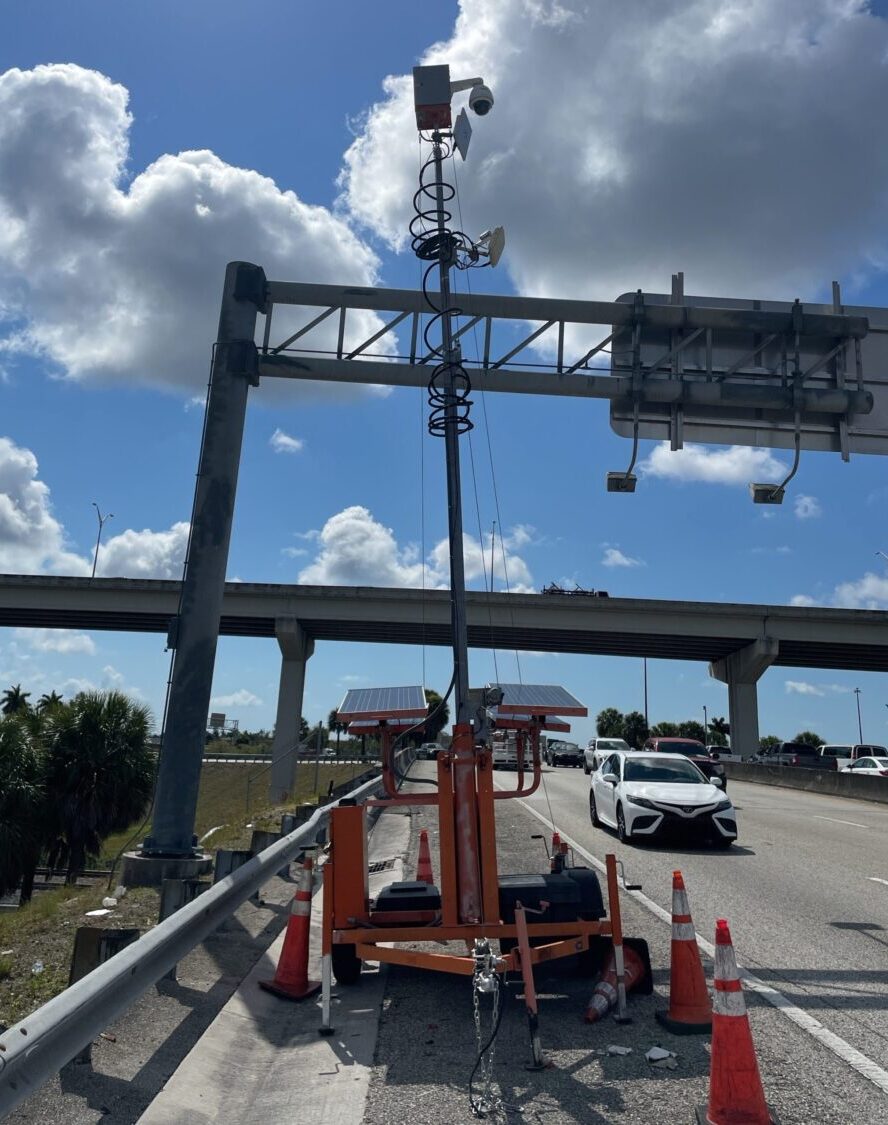
FDOT District Six Mobile CCTV Camera Capabilities
The District Six Transportation Systems Management and Operations (TSM&O) Office uses innovative devices and technologies such as closed-circuit television (CCTV) cameras to manage roadway traffic in southeast Florida.
The District has over 400 CCTV cameras deployed along the state roads in Miami-Dade and Monroe Counties. Traffic operators use them to monitor real-time traffic conditions for incident detection and clearance. They allow operators to communicate event status information with incident managers, partner agencies, and the traveling public. They are critical to traffic operations and promote roadway safety.
In addition to the permanent cameras, the District has three mobile CCTV cameras that can be used when there is no available coverage. The mobile cameras are implemented on an as-needed basis. They are used during special circumstances or events such as monitoring signal operations at a particular intersection, evaluating traffic congestion due to lane closures associated with emergency repairs, or helping with traffic management after a hurricane. The portable cameras have pan-tilt-zoom capabilities and are mounted on a unit that collects traffic volumes and speeds with a microwave vehicle detector (MVDS).
The District recently deployed all three cameras in support of an emergency bridge repair. This was a Florida’s Turnpike bridge that spanned SR 826/Palmetto Expressway within the Golden Glades Interchange in Miami. An oversized vehicle struck the bridge causing extensive damage. District Six was able to assist the Turnpike by deploying mobile cameras to monitor bridge repair progress and the impact to surrounding traffic. The cameras were available for viewing through FDOT’s Data Integration and Video Aggregation System (DIVAS).
These portable devices are allowing District Six to remain responsive to the changing needs of our regional roadway network. They have been an excellent addition to the District’s congestion-management toolbox that will be used on other scenarios in the future.


